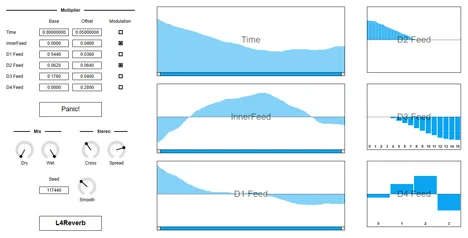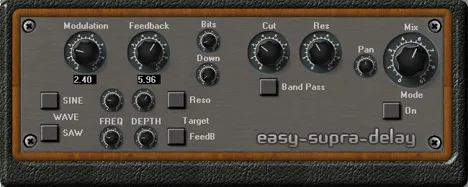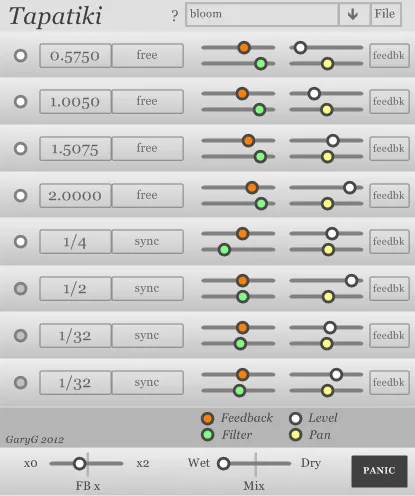L4Reverb: Spatial Immersion with Unique Reverb
Reverberation is not just an effect; it’s the breath of space, an atmosphere that can transform ordinary sound into something magical. It adds depth, volume, and a sense of presence. The current plugin market features a multitude of diverse reverbs, from classic emulations to innovative algorithms. Among this variety, L4Reverb from developer Uhhyou stands out – a plugin that offers a fresh perspective on creating spatial effects thanks to its unique architecture.
L4Reverb is a development of the ideas in its predecessor, LatticeReverb. Both are based on the concept of using a so-called “lattice structure” to form echoes and reverberation tails. This structure allows the creation of complex delay and feedback patterns, which differs from traditional approaches to reverb modeling. L4Reverb expands on this idea, significantly increasing the number of sections in the lattice – up to 256 sections per stereo channel. This exponential growth (4*4*4*4 = 256) opens up new possibilities for creating dense and rich spatial effects.
Features and Sound
The key advantage of L4Reverb lies in its ability to generate long, bright, and voluminous reverberation tails. This plugin is perfect for creating atmospheric pads, expanding solo instruments, adding epicness to vocals, or shaping ambient textures. If you need a reverb that seems to soar in space and gradually fades away, leaving a feeling of boundlessness, L4Reverb can become an interesting tool in your arsenal.
However, it is worth noting that, according to information from the developer, L4Reverb performs best on long settings. When trying to create short reverberation spaces, it can take on a slightly metallic hue, sounding more like a set of short, closely spaced delays. This feature can be both a disadvantage for certain tasks and an interesting creative characteristic for sound experiments.
Key Features
Despite its unique internal structure, L4Reverb offers the user a set of necessary controls to shape the sound:
- 256 delays per channel: The foundation of the plugin, providing a high density of the reverberation field.
- Simple modulation: Allows you to add slight movement or “life” to the reverberation tail, making it less static.
- Basic M-S stereo width control: Provides the ability to adjust the width of the reverb stereo image, from mono to super-wide stereo.
- Stereo cross-feedback: A function that allows you to cross-connect the left and right channels in feedback, contributing to the creation of a more complex and voluminous stereo image.
Technical Aspects and Recommendations
Due to its complex internal structure with a large number of calculations, L4Reverb is quite demanding on the central processing unit (CPU). This is an important point to consider when working with this plugin, especially if you use it in multi-track projects or on less powerful systems.
The developer directly recommends using L4Reverb in conjunction with “freeze” or “bounce” functions in your digital audio workstation (DAW). This will allow you to process sound fragments with the plugin and then convert them to audio files, freeing up CPU resources for further work on the project.
In addition, for the correct operation of L4Reverb, a central processor supporting SIMD instructions of the AVX level or newer is required. This means that the plugin may not work on very old computers.
Conclusion
L4Reverb from Uhhyou is not a standard reverb. Its lattice architecture with 256 sections per channel makes it a tool for creating special, long, and bright spatial effects. If you are looking for a unique reverb for ambient textures, atmospheric soundscapes, or just want to experiment with sound and have a powerful enough processor with AVX support, L4Reverb deserves your attention. Remember its CPU requirements and use the freeze/bounce functions in your DAW to optimize your workflow. This is a tool for those who are ready to explore unconventional approaches to shaping sonic space.



